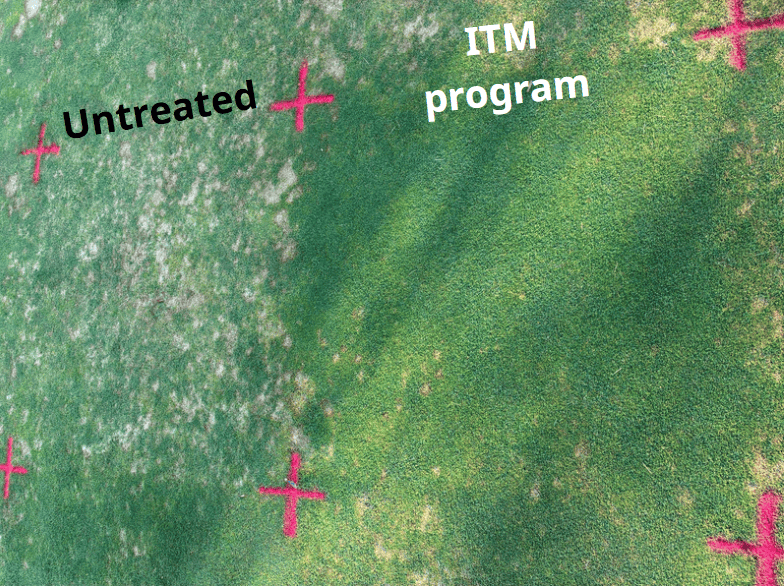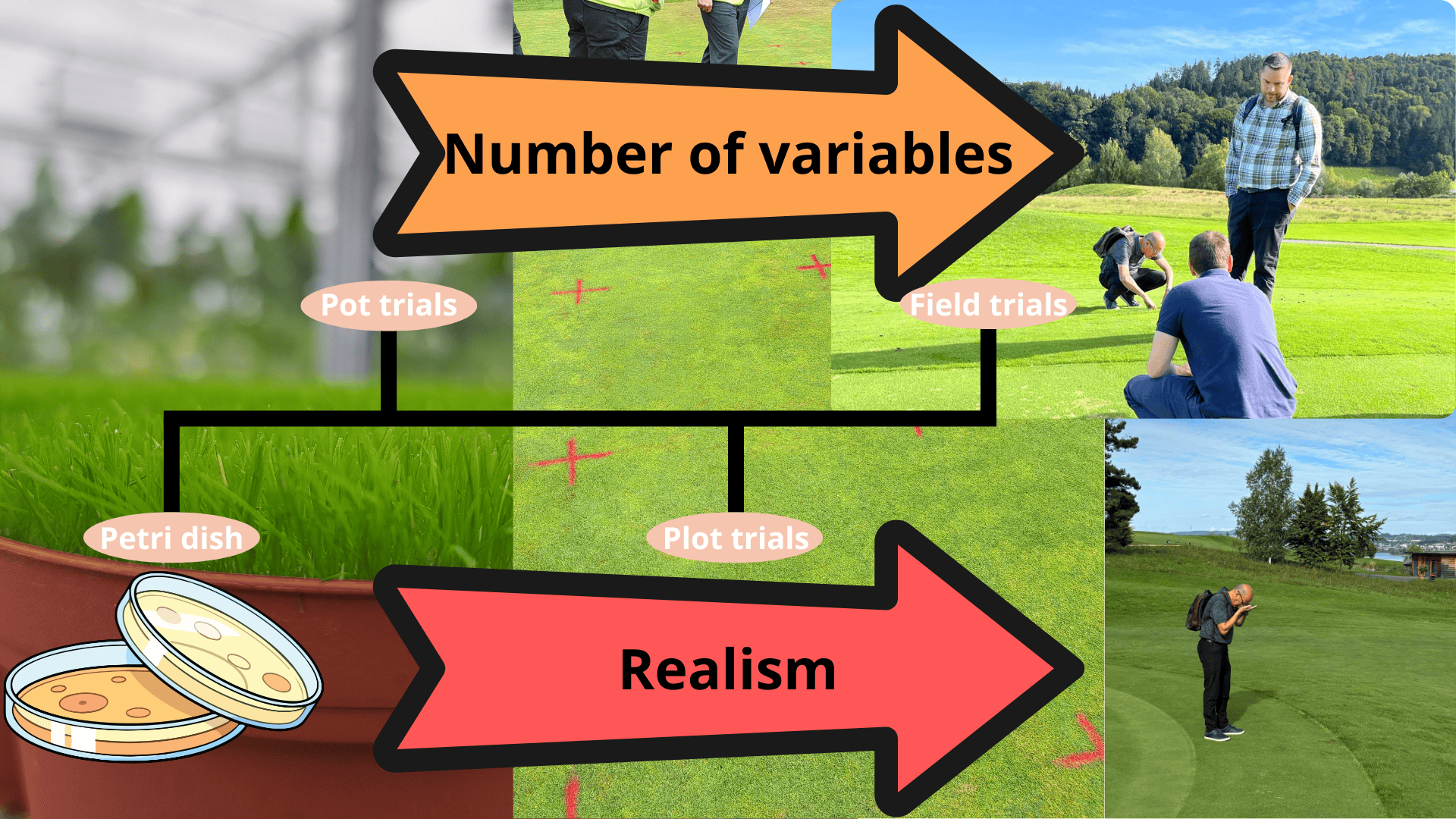Either way – you want to know if being in a Primo Maxx II program is going to help or hinder divot recovery.
First of all; the benefits of being in a Primo program are well known, and thoroughly proven.
It must be one of the most studied products in turf globally.
Any addition you make to a tank mix has a price tag, so you want to be assured you are gaining in the areas you want, be that:
- Turf quality presentation
- Turf colour & chlorophyll density in leaves
- Reduced vertical growth to free up staff for other tasks or detail work
- Getting the best from new seedlings
- Fast divot recovery
It’s a complex question to answer so I’ve broken it into two parts:
1) Smaller divots recover faster
2) Established swards under Primo regulation better allow new seedlings to ‘join the party’
Smaller divots
I’ve not completely lost it.
I know you have no control over the quality of golfer taking chunks out of your tees and fairways.
Perhaps step one is you running some training at the range?
But in seriousness the force, depth and angle of the club striking the ground is outside of your control.
Those factors are going to vary between golfers, sites etc. but that is one side of the equation.
The other is the resistance offered by the turf surface.
If the club strikes a pure sand or dry soil surface its going to send a lot of loose material flying – very little holding that surface together.
The factors which will add to that “resistance” when the clubs force is applied are:
- Turf density
- Root volume
- Root depth
The more you increase the above, the better anchored the turf is, better stitched together.

So when the club hits, on average its leading to a smaller divot.
Smaller divots mean faster recovery from the surrounding sward and new seedlings.
A sward in a Primo Maxx II program is proven to be higher on the above factors, hence helping reduce the size of divots.
I’m not even going to get into the improved drought tolerance in a Primo program.
New seedlings to join the party
The advice for making a Primo application is wait until the two true leaf stage.
If you are establishing a new playing surface from seed you need to wait for that first application, as you may stress the very young seedlings if applying before this time.
This worries some users around divot recovery, as you will always have some seedlings at that most tender stage.
The balancing act here is: it’s not ideal, but also not deadly for those freshly popped seedlings to be exposed to the Syngenta PGR (plant growth regulator).
If you could choose you would wait until all seedlings are at the two leaf stage, but the reality is you have a constant conveyer belt of seeds hatching in divots, so if you waited you would never find your spray window.
Seedlings move rapidly from busting to the surface to two leaf stage, and only a very small proportion will be at a tender stage at any time.
Any potential negative effect would be offset by the upside, of holding back the existing sward from shading out the new seedlings.

You can see from the study above that holding back existing plants from shading seed areas is vital to improving seed strike rate.
Yes or no?
To summarise, I would say Primo Maxx II is safely in the Friend zone when it comes to rapid divot recovery.
The benefits in terms of pre-priming a surface to receive less divot damage, and making the most of new seed outweigh any negative impact.
Primo Maxx II is a great tool to to help present superior turf surfaces.




